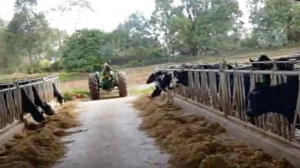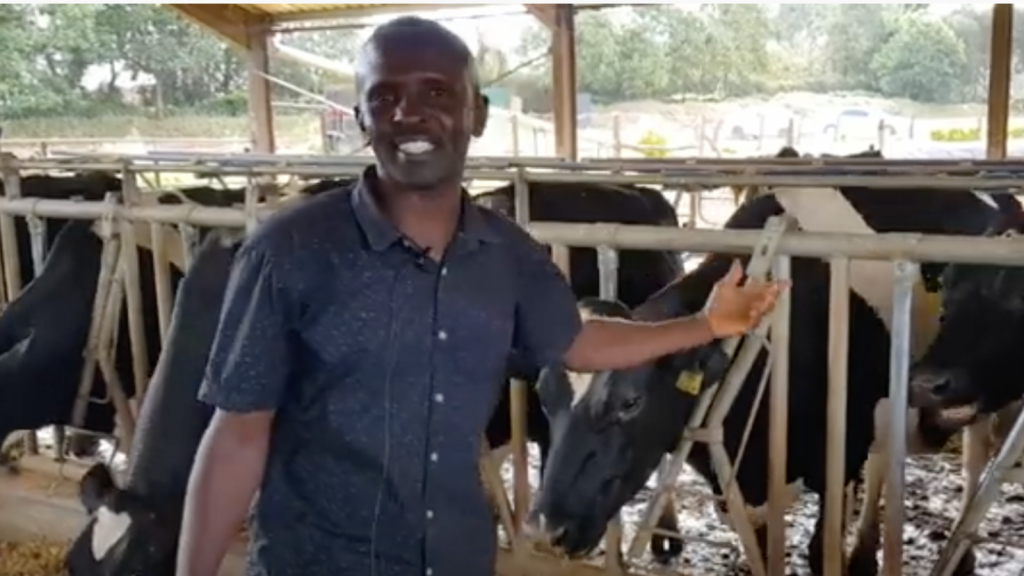Dairy farming
Dairy farming in Kenya is a very important sub sector in agriculture having over 1.8M dairy farmers contributing almost 4% to the national GDP. The sub sector supports a majority of Kenyans who irk a living from dairy farming directly or indirectly. Though profitable, sufficient knowledge on how to look after the milk cows, sound management and proper business plan are needed for the business to be sustainable.
However there are factors one has to consider before venturing into the dairy farming in Kenya.
- Capital
- Acreage
- Climate
- Type of breed
- Number of animals/Breeding
- Source of fodder
- Disease management
- Market
- Value addition

Dairy farming is the rearing of animals, more specifically cattle, for commercial milk production. Furthermore, other products can also be processed including yogurt, milk powder, cheese, ghee, and cream. In fact, goat milk and camel milk is also available but not in the same scale as cow milk. Risa Molito dairy farm and Joy farm, both dairy farms in Kenya, have come of age and mastered the art of dairy farming in Kenya, in other words, taken it to the next level of profitability. Moreover they allow for farm visits for farmers to learn about animal husbandry, management of pests and diseases and animal supplements feeding programs to increase milk production.
Locally, Risa Molito dairy farm has ventured into the dairy farming business currently with a herd of 115 dairy cows. Located in Limuru, the farm which started in 2004 with 5 cows, proudly produces 1200 liters per day.
The herd comprise of
- 54 milking cows, consisting of high yielders and low yielders
- 5 dry cows
- Recent dry cows and steaming cows
- 45 heifers
- 4 – 9months
- 10 months to calving time
- 10 calves
There feeding ratio depends on lactation and age. Their weight (approx. 350kgs) is monitored for purposes of AI. Targeted production is 1500 liters per day although the cost of feeds is prohibitive, making production cost high.
Joy Farm
Joy farm is based just in the outskirts of Nakuru in a 5 acre farm where they keep 100 cows of which 32 cows are currently being milked, 10 are dry cows, 25 in-calf heifers and 26 heifers in addition to lucerne and maize fodder plantation. With a plan in place, the farm started in earnest in 2008 and has steadily increased the herd population culminating into increase in production. This farm is one of the most successful farms practicing dairy Farming in Kenya.
The farm has employed 6 workers who do the feeding, milking and cleaning of the animals. When it comes to feeding, which depends on the stage, the milking cows get more silage while the heifers are only fed with hay. In the same vein, maize silage, lucerne and hay are fed to the milking cows in the ratio of 70%, 15% and 15% respectively.
The milking is done using machines three times in a day at an interval of 8hrs with the milking cows producing between 14 liters and 42 liters per day. Thereafter the milk (750 liters) collected daily is stored in a cooler and sold to a processor. Wheat bran, maize, maize germ, canola, soya meal, lime, salt, toxin binder, dairy premix and bi-carbonate of soda some are of the ingredients used to make feeds which together with growing fodder has helped in cutting costs.
To manage pests and diseases, the cows are sprayed twice in a month, while the calves are de-wormed and weaners once a month. They also receive vaccination against foot and mouth and skin diseases twice a year.
Ideally it is important to attend workshops and trainings as it keeps the farmer abreast with the new and emerging practices for dairy farming in Kenya.

The calves and weaners are Dewormed once per month??? I don’t understand the peactability.
It is challenging me when i read stories of a farmer with big number of cows. Thank you for motivating us
You are welcome, we will continue doing so
Thank Justin for reading and getting encouraged. Next we will publish a dairy farm in Israel we visited with over 1700 cows. 956 are milked everyday with a total milk production of 37,000 liters everyday
Is the daily production generating back sustainable maintenance of the farm? i.e purchasing dairy meals, paying labor and other farm management?If yes congratulations for the good job.
Yes it is self sustainable